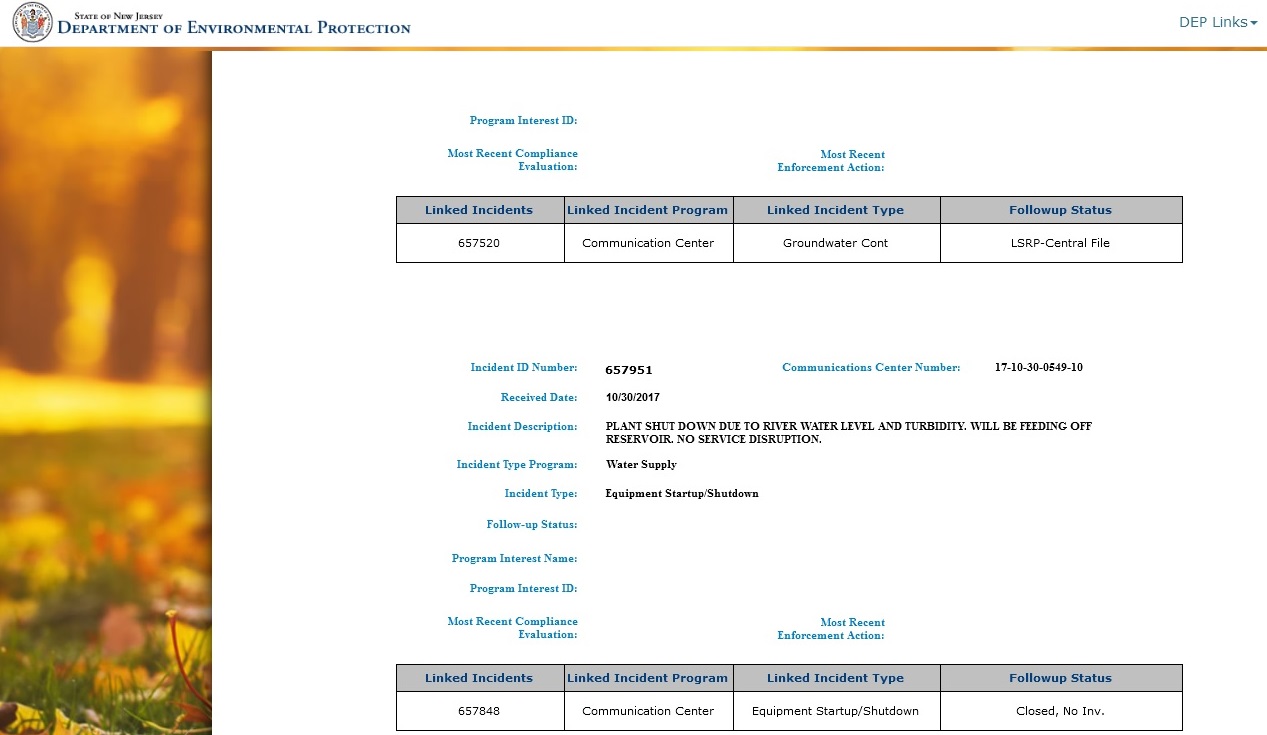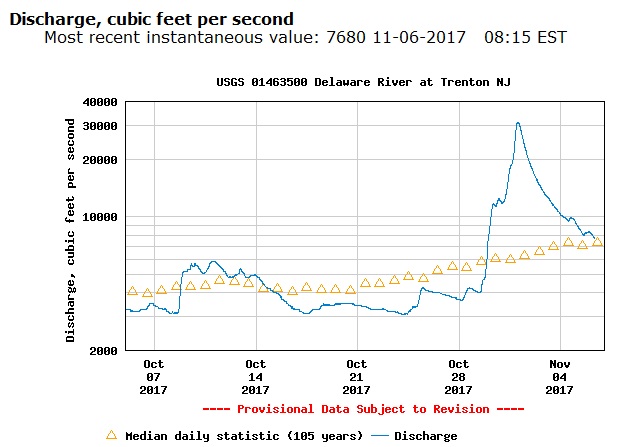As emailed to City Hall this morning, 11-6-17:
Good Morning, Mr. Mayor –
Once again, for the second time in less than three months, I write with concern about the quality of Trenton’s Water Supply, and by extension the management of the Trenton Water Works. And once again, I must ask that your Administration and the TWW management owe an immediate explanation to all customers of the Water Works, both inside the City of Trenton and throughout Mercer County.
The cursory Notice on the City website speaks only of “low water flow” as the reason for which customers are urged to conserve water. Mr. Mayor, recent history of the Water Works leads to justifiable skepticism from all customers. We need and deserve more information. More detailed information, and more timely information.
Is this latest incident the same as reported on the NJ Department of Environmental Protection website? Incident number #657951 dated 10/30/10 is described as “PLANT SHUTDOWN DUE TO RIVER WATER LEVEL AND TURBIDITY. WILL BE FEEDING OFF RESERVOIR. NO SERVICE DISRUPTION.”

Is this also related to the very high (relative to readings reported during the last 30 days) turbidity values in the Delaware River at Trenton reported by the
US Geological Survey on their website?
If so, why do you not report this to TWW customers? With the lack of detailed explanation provided to customers as of this morning, this only does harm to the level of trust placed in the Water Works. The general lack of trust has been caused by several things over the last several years, not least of which is the high level of unfilled personnel positions within the Water Works. Your Director of Public Works has spoken to neighborhood civic groups of dozens of unfilled positions. I am seeking detailed information of the status of that problem by an Open Public Records Act request, which the Clerk’s Office tells me will be fulfilled no later than November 20 (It had been due on November 1, but the Clerk requested additional time).
This most recent instance appears, based on the USGS data, to have been caused by changes in conditions of the River itself, rather than operational issues. However, they may be related. We don’t know, as of this morning.
Customers deserve a fuller explanation of this most recent problem than they have received as of this morning. I do hope you and your colleagues will address this today as an urgent priority.
Thank you.
Sincerely,
Kevin Moriarty



One of the operational challenges presented to a treatment facility by a surface water supply is maintaining adequate treatment when faced with rapidly changing water quality as measured by temperature, pH, alkalinity, turbidity and other water quality parameters. When those changes occur, on site personnel must adjust the treatment process to achieve and maintain delivered water that meets or exceeds the regulatory water quality requirements. To have a full understanding of the possible scenarios that could have resulted in no output as a result of a plant shutdown or a reduction in output, some knowledge of the treatment process would be helpful. However, to provide a possible scenario and to keep this relatively brief, a mention of the steps of the process includes coagulation, flocculation, sedimentation, and filtration with disinfection occurring before filtration and prior to delivery to the distribution system.
So, when the river water enters the plant, a coagulant (chemical) is added to achieve flocculation (bringing together suspended particles to create heavier masses). The amount of coagulant is determined by the river water qualities mentioned above and manual tests are conducted on site to help determine the proper amount. Other chemicals may be added to adjust the pH of the incoming water. After the coagulant does it job, the water is allowed to flow through the plant at a rate that allows the particles to settle out during the sedimentation process. At this point, the settled water would typically have a turbidity of about 1 NTU and could be somewhat higher if the plant influent has a turbidity greater than 10 NTU. The settled water then flows to the top of the filters and is filtered. The filtered water should have a turbidity of 0.3 NTU or less.
Given the rapidly changing water quality as shown on the turbidity graph, on site operators would have had to make effective adjustments in the treatment process to maintain water quality. If the required adjustments were not done or attempted but found to be ineffective, settled water may have had a turbidity well in excess of 1 NTU and may have also created a settled water that was not able to be adequately filtered. If that happened, the filtered water may have exceeded the allowable filtered water NTU level which would have required the plant to stop delivering water. Such an event would have required the plant to continue to not deliver water until it was able to produce filtered water that met the filtered water turbidity requirement. It may be that after such an event it takes quite a while before the plant is able to produce water that meets all water quality requirements.
This also could have occurred if the equipment used to deliver the treatment chemicals experienced complete failure. That is possible but the plant, which is relatively new, should have redundant or parallel delivery systems to allow continued operations should there be a failure of one of the units.
The turbidity graph shows a maximum recorded turbidity level of about 70. As a way to gauge the severity of this “spike” a review of the historical turbidity data will probably reveal that this was not that sever when compared to turbidity levels spiking to over 1,000. Nevertheless, the spike shown in the graph may have indeed been enough of a change over a short period of time to have cause a treatment upset as mentioned above.